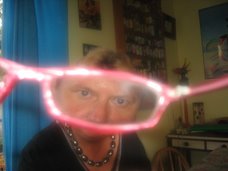Time to tap into hidden power of waves

THE oil and gas may run out, but the surf won’t. Taranaki’s wild Tasman Sea (right) could be the next natural resource to be harnessed in the search for a renewable energy source.
In fact, the waters surrounding New Zealand are just waiting to be tapped to make electricity, according to John Huckerby, executive officer of the Aotearoa Wave and Tidal Energy Association (AWATEA).
The acronym is a Maori word that means “new dawn” or “new beginning”, which the group believes is appropriate for this emerging technology. The full title explains the two ways the sea can provide energy – tidal and wave power.
The latter applies to Taranaki, especially the exposed south-west coast.
There are three types of wave device design but only two would be viable for Taranaki, Huckerby says.
One is the Pelamis Wave Energy Converter, which is the world’s most advanced technology.
“Some people call them the sea snake,” he says. “They look like commuter trains.”
The other is called a point absorber device, which sits vertically in the water.
Both use the motion of the passing sea swell to produce electricity.
“Wave and tidal energy is sustainable, clean, available, reliable and forecastable, We believe that New Zealand can source a significant proportion of its new energy supply from marine energy in the medium term.”
Huckerby says wave power Down Under is already a reality.
“It’s not commercial yet, but that’s not far away.”
An experimental wave device has been tested in Lyttelton Harbour since November last year, he says.
Other countries have waded right in. Britain has spent more than £50m ($NZ135m) in marine power projects. Earlier this year, £4 million ($NZ10.8m) funding was tabled to enable ScottishPower to build the UK’s first wave farm. Four Pelamis devices, with a combined output of 3 MW, will be placed off the Orkney Islands (below, left). The world’s first commercial wave farm, the Agucadora Wave Park in Portugal, will be established later this year, utilizing the Pelamis device.
The world’s first commercial wave farm, the Agucadora Wave Park in Portugal, will be established later this year, utilizing the Pelamis device.
“The New Zealand Government has recognized the potential for this country,” Huckerby says.
If and when wave power projects take off, Taranaki’s wave riders won’t lose their special spots.
“No, the surfing community can be rest assured that it is unlikely to have an impact on them,” Huckerby says.
“It would be a coincidence if a project was near a surfing break – surprisingly, breaking waves have already lost a lot of their energy. The sites for surfing and wave power generation should be mutually exclusive.”
Instead, our region could safely ride the wave of a new energy resource that won’t run out.
Interest for Taranaki, particularly with its strong marine-related industries, is growing.

No comments:
Post a Comment